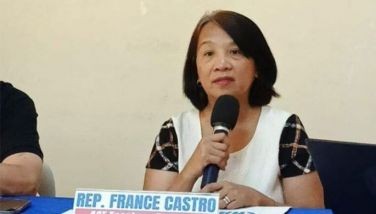Scanning the dilemma of poverty in the US

The July 2012 data on manufacturing show that industrial output in the world’s largest economies has contracted or slowed considerably. Here’s a snapshot of the trend: In the US, manufacturing grew at its slowest pace in three years; in China, it has contracted in the past 8 months; and in Europe, the contraction has run for 11 months now.
The data indicate that recovery from the 2008 global financial-economic crisis will take much longer. Moreover, conditions will most probably worsen for the ever-increasing number of the poor in these industrialized countries and in the rest of the world.
In this column last December, I discussed the US census finding that “one in three Americans – 100 million people – is either poor or perilously close to it.” The poor are categorized into two: 1) 49.1 million “poor” (families of four living below the poverty line, with $24,343 annual income); 2) 51 million “near poor” (families with incomes less than 50% above the poverty line).
[The poor in America exceed the Philippine population of over 90 million.]
With the cost of living staying high and “living standards being eroded by stagnating wages and tax and economic policies that favored the wealthy,” the census report says, “many amenities of modern life – education, health care, child care, housing, and utilities – are increasingly out of reach for the poor and near poor.”
A recent book, titled “So Rich, So Poor: Why It’s So Hard to End Poverty in America,” by Peter Edelman, provides a deeper perspective into the US poverty problem.
The author, a law professor at Georgetown University, has written a concise piece on his study published in the International Herald Tribune.
Here are some of Edelman’s insights:
1. The poverty rate has gone this way: 11.1% in 1973; 15.2% in 1983; 11.3% in 2000; and 15% in 2011 (or 46 million Americans).
2. Government programs (social security, food stamps, earned-income tax credit, cash aid for low-income mothers with children) have kept 40 million out of poverty.
Absent these programs, the number of the poor would be double.
3. Low-wage jobs are a prime cause of poverty. “We’ve been drowning in a flood of low-wage jobs for the last 40 years. Most of the income of people in poverty comes from work… 104 million people have annual incomes below twice the poverty line, less than $38,000 for a family of three. They struggle to make ends meet.”
4. Half the jobs pay less than $34,000 a year; one-fourth pay below the poverty line (less than $23,000). Worse, 20.5 million people are in families earning less than $9,500 — below half the poverty line.
5. Six million Americans have no income other than food stamps (equal to 1/3 of the poverty line, or $6,300 for a family of three). Altogether, food-stamp recipients number 46 million, from 26.3 million in 2007. (Edelman calls food stamps a “powerful antirecession tool.”)
6. Although 10% of the white population constitutes the largest number among the poor, disproportionately 27% of minorities (African-Americans, Latinos, American Indians) are poor.
What is to be done?
First, provide more jobs that pay “decent wages.” The problem is, Edelman laments, “there aren’t enough of these in our current economy.” Beyond that, he adds, there should be a full-employment policy and a bigger investment in education and skills development strategies.
Equally needed, he urges, are these steps: make the rich pay their “fair share” of taxes, raise the minimum wage, provide health care and a decent safety net.
Alas, Edelman acknowledges that his suggestions are up against the hard rock that is the Republican-controlled House of Representatives, which is ideologically primed to “slash everything from Social Security to Medicare and on through the list.” It’s bent on giving more tax breaks to America’s top 1% rich, whose wealth “grows at the expense of everyone else.”
Alluding to the US presidential-congressional elections in November, Edelman wistfully writes about a “surefire politics of change” that would involve the middle-class identifying their economic self-interest with the poor and voting for candidates with a similar turn of mind.
“As long as people in the middle identify more with people on the top than with those on the bottom, we are doomed,” he warns.
Harking back to the Progressive Era a century ago and to the Great Depression in the 1930s when gross economic inequality spawned “an amalgam of popular unrest and progressive movements,” Edelman claims the same “ingredients” obtain today.
He hopefully looks toward the new generation of young people to lead the change because they are “unusually distrustful of encrusted power in all institutions” and are “tending toward libertarianism.”
“Lower-income people will participate if there are candidates who speak to their situations. The change has to come from the bottom up and from the synergistic leadership that draws it out… The people have the power if they will use it, but they have to see that it is in their interest to do so,” he concludes.
Edelman may partly be right on the ingredients. But to expect change via the middle class and the electoral process is quite unrealistic.
* * *
Email: [email protected]
- Latest
- Trending





























